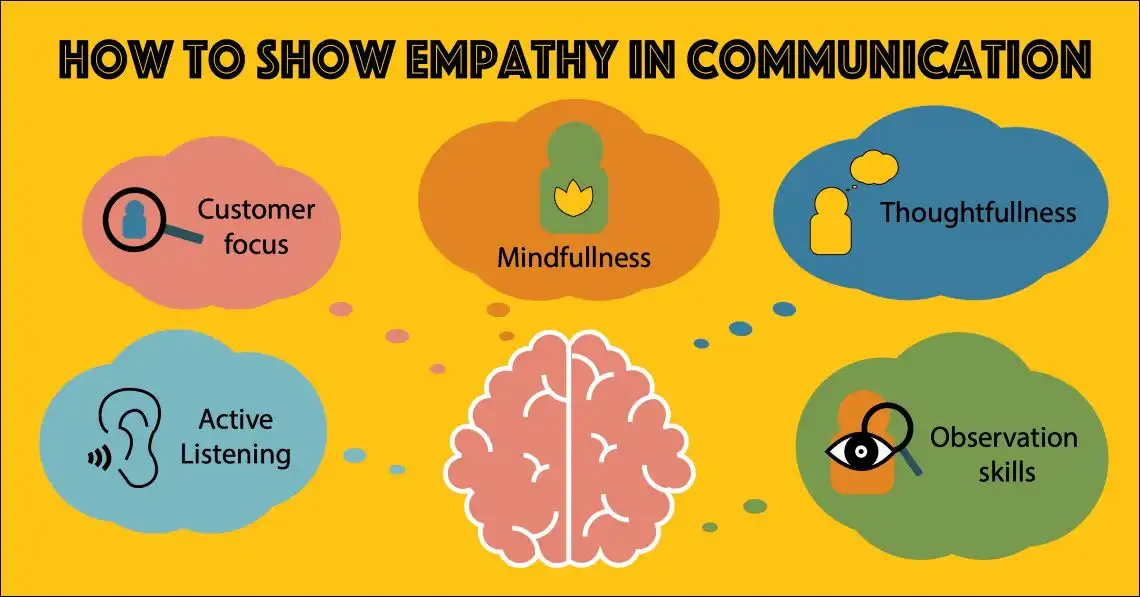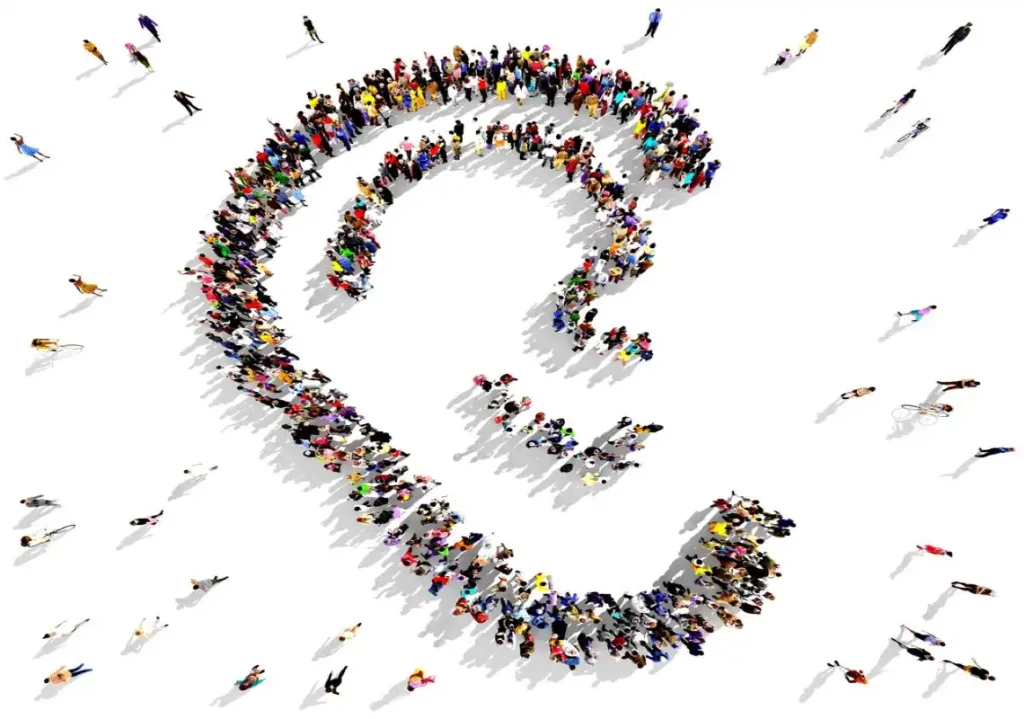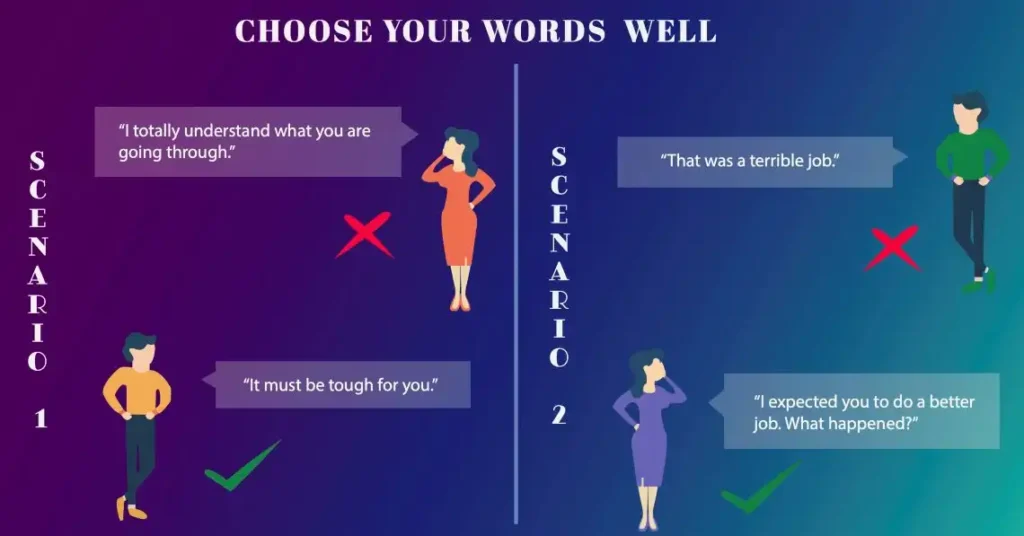
Decoding Empathy in Communication: Know How to Get it Right
30 May 2021
Panchalee Thakur
The use of empathy in communication has been a part of the corporate discourse for a while now. Today, in a world battered by COVID-19, empathy may very well be the compass that guides brands into their customer’s hearts and minds and the glue that binds an organisation together.
While a dose of empathy in communication can elevate the tenor of conversations, it may not come easy to many of us. Old habits and beliefs that are baked into our sub-conscious reveal themselves in the way we speak or write.
But can we change our ways? Of course, we can.
Do we know how to change? Well, not always.
Empathy vs Sympathy: Know the Difference
Psychiatrist Alfred Adler defines empathy as “seeing with the eyes of another, listening with the ears of another and feeling with the heart of another.” Or, in other words, experiencing the world as though you are walking in someone else’s shoes.
This ability to visualise a situation from the perspective of others gives us emotional intelligence, and thus makes us a more effective communicator.
However, before you start working on infusing more empathy in your communication, understand what it truly means. Empathy is often confused with sympathy. While both have their roots in the Greek word “pathos”, meaning feelings, there is a difference. This is how Merriam Webster defines the two: “Sympathy is when you share the feelings of another; empathy is when you understand the feelings of another but do not necessarily share them.”
When A loses her close family member, we feel for her and show our sympathy. But we are not in that situation and hence are detached from it. Whereas when B is nervous on stage and is fumbling through a presentation, we are empathetic towards him. We can easily put ourselves in B’s shoes and understand what he is going through. However, when A joins back work and is unable to meet her commitments, we see ourselves in her situation and become empathetic towards her.
Empathetic Leadership
Two of the greatest leaders and changemakers in the world – Mahatma Gandhi and Nelson Mandela – are known for their empathetic leadership. Gandhi went to great lengths to live the life of the oppressed so as to understand their pain. Mandela used empathy to understand his oppressors’ perspectives better. Among today’s political leaders, New Zealand Prime Minister Jacinda Ardern has often spoken about the need for empathy and kindness to underpin leadership.
The most prominent business leader to have embraced empathy is Microsoft CEO Satya Nadella. One of the first tasks that he took upon himself as the CEO was to do an organisational reboot and place empathy at its cultural pivot. Apple and Ford are two other giants that are using empathy to improve their product offerings.
Research by Businesssolver in 2020 on the State of Workplace Empathy shows that more than 90 percent of employees, HR professionals and CEOs think empathy is important and has a direct business impact. A whopping 80 percent of employees said that they would switch companies for equal pay but a more empathetic employer. The starting point of being empathetic is an employer who lends an ear to its employees.

Empathy in Communication
One of the key indicators of being empathetic is in the way we write or speak. It is about keeping the other person’s situation, perspective or emotions in mind while writing or speaking.
If you want to fit into the workplace of the future, you will need to become more empathetic in the way you communicate.
Here are some simple yet effective strategies to get you started on the path to empathetic communication.
Written communication
Writing with empathy starts with imagining that you are the consumer of that content. Empathetic communication is about understanding the pulse of the reader or the buyer, and being thoughtful in how you connect with them.
Luxury brand Kate Spade New York decided to listen to their customers rather than talk to them in their marketing campaigns, which resulted in big gains in customer engagement.
Find out about different forms of B2B communication in this related blog.
Marketing content
Overly promotional content falls in the category of non-empathetic communication. Such content focuses on your company and its offerings, and leaves the customer out. To acquire an empathetic tone, turn the content around to focus on the buyer.
Scenario 1:
Our best-in-class cloud solutions with high scalability and advanced security features are powering remote work.
Scenario 2:
Empower your remote teams with cloud solutions that are highly scalable and offer advanced security features.
Both these sentences deliver the same message – how today’s businesses with remote teams need the company’s cloud solutions. But by changing the focus from the company to the user in scenario 2, the tone softens and gets more empathetic.
Email communication
Give your email a once over by reading it from the perspective of the receiver – checking for tone of voice. Is the tone too harsh? Is it too soft and hence not assertive enough?
Let’s assume a manager wants to tell a team member to stay back and finish some work before leaving for the day.
Scenario 1:
“Rachael, you must complete the report before you leave today. I need it tomorrow.”
Scenario 2:
“Rachael, I’m so sorry but just that the report is needed tomorrow. Do you mind completing it before you leave?”
Scenario 3:
“Rachael, I understand that you are working hard on the report and I truly appreciate your effort. Please complete it today so that I have it tomorrow.”
The tone in the first scenario is harsh and aggressive. In the second, you are not only being apologetic but also hiding behind the passive voice and not saying that you need the report. The third scenario is a strong example of empathy – humane yet clear and assertive communication.
What is the right balance? There is no ready-made script to include empathy in communication. But re-looking at what you have written from the recipient’s point of view is always a good guide.
Spoken communication
Think of how you can speak with empathy in both small group settings such as a meeting or a larger group setting such as while making a presentation.
We often equate strong verbal communication with being fluent in the language and speaking with confidence. But there are many other nuances that we overlook such as being more humane.
Have you sometimes felt that while you spoke, the other person heard you but did not really listen? Or you were in the audience and the presenter rambled on without noticing that the audience was not paying attention?
Being empathetic is to watch out for non-verbal cues that you have lost the listener. Are they fidgeting too much or looking at their phones? Sometimes people bob their head a lot without waiting for you to even complete a sentence. That indicates that the other person is not really listening.

Check out both the scenarios in the above table. In the first, by changing the focus from you being understanding to the person who is going through a tough situation, your tone has become empathetic. In the second scenario, instead of blaming someone for a job badly done, you are saying that he has the potential to do a better job and you’re giving him a chance to explain.
So, how can you be an empathetic speaker?
Know the audience: Make your presentation or talking points relevant to the listener. Marketing spiel does not interest the audience. The most engaging presentations are the ones that look at a problem from the other person’s point of view and subtly brings in the solution. Present facts in the form of stories to make them more relatable to your audience.
Read our blog on how to use storytelling for more effective communication.
Look for visible cues: Is your voice bordering on intimidation? What effect is it having on the receiver? If you are receiving meek monosyllabic answers, the receiver is probably nervous in your presence. Do self-checks from time to time in order to become more responsive and empathetic.
Listening with understanding and mindfulness: Listening is one the most underestimated and underutilised skills in communication. Do you listen to understand or listen to reply? If it’s the latter, it means you are ready with a response even before the speaker has finished. In order to develop empathy in communication and understand others, practise active listening. Be mindful of the circumstances, be present in the moment and listen to understand. That way you will observe better and provide the right response.
Rhetorical questions may be an effective tool in a speech but it is an apathetic way to communicate with somebody in person. It precludes an effective response since the response is included in the question. For instance, “Do you expect me to believe you did not start the fire?” Instead, ask: “Who started the fire? Was that you?”
Effective communication is a lot more than the substance; the tone equally matters. A message delivered with an empathetic tone has a higher degree of effectiveness. Choose your words well and always keep the recipient in mind while writing or speaking. Empathy in communication is a skill that is hard to find but not impossible to learn. Practise it as a power skill that will make you fit for the future of work.
How can we help you? Drop us an email and let’s start the conversation.
